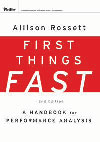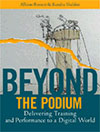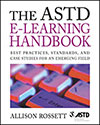The California State University (CSU), the largest state university system in the United States, has at long last settled on an online learning strategy for its 23 campuses. With more than three decades as a professor in the CSU, now retired, I decided to take a look.
The goal. “The goal is to increase capacity at California State, where massive budget cuts have coincided with a rising demand for higher ed degrees,” wrote Steve Kolowich in a review of the plan.
The doubts. Many faculty extend their doubts about CSU leadership to online education, an easy target for professorial skepticism. What about quality? What about relationships? What about dwindling dollars directed to new technology schemes rather than familiar, underfunded academic programs? The CSU system has done little in this area to establish confidence, with online action driven by individual faculty, programs and campuses.
Baby steps. At the get-go, Cal State Online will serve as an engine for marketing and technology support for sixty existing online programs. Think about the initiative as a new high tech ramp to current programs and practices.
Ruth Claire Black, the new director of Cal State Online, in an open letter to the CSU presented 10 guiding principles. Concerned about external, centralized control? Have no fear. Participation is voluntary. What about recognition and support for faculty? It is there, in principle number 2. What about quality? That’s assured in principle 7: “Online courses will meet or exceed the quality standards of CSU face-to-face courses.” What about the cost of online classes? Financial aid will make these assets accessible to all. All? And if worried about short shrift for campus and student life, there is a vow to deliver “world class student services” and consideration of ways to include “place” in online instruction, thus leveraging campus infrastructure.
Magical methods. Those are lofty promises and gnarly matters. How will it unfold? Just one example of the conundrum: Cal State Online states that it will focus on academic areas in which the CSU is “already strong and proficient.” Makes sense and sounds good until you attempt to sort the strong and proficient from the others. Does such a list exist? Other than an extensive RFP process which will invite experienced providers into some aspects of the mix, few details are provided. And the devil, of course, is in those details.
A long slog. The Kolovich piece quotes F. King Alexander, President of Cal State Long Beach, as acknowledging that the CSU is about ten years behind everybody else in online education. Because California processes are far from nimble, Cal State Online will struggle to decide and execute. Every base that is touched increases time and cost– and Director Black promises that she and her group will visit many bases. Even before the RFP hits the street, the following entities will review it: Statewide Academic Senate, Executive Council, Faculty Senate Chairs, Presidents, Provosts, VPs Academic Affairs, CABO, ITAC, TSC, ATSC, ATAC, DAT, Deans of Extended Education, Directors of Distance Learning and the Commission on the Extended University. Her letter assures that all participating online programs will be subject to the same approval processes and oversight structures as on-campus programs.
Cal State Online, which took years to conceive, is now scheduled to pilot in the Fall semester, 2012, and then to launch in Spring, 2013. While the intention is to deliver to California students first and all the world next, it is difficult to believe it will serve large numbers any time soon.
Re-thinking the CSU. While refreshment of Title 5, the brilliant 1960 Higher Education Master Plan, is long overdue, Cal State Online is unlikely to jump start a new vision. A plan that is struggling to not be too scary will not advance core issues: How are credits earned? What is credit? Must students take a class or can they prove proficiency through other authentic demonstrations? What is a course? How will we know that a course is worthwhile? Do we still need courses? How about our students’ need for campuses and majors? Will the fact that technology can enable more choice guarantee that students will get to make more choices? How will we help students to make smart choices? It is important to engage on those questions and to extend the discourse into how we think about programs, requirements, instructors, certification, assessments, and instructional time and space. Net, net, these are questions about technology as addition or supplantation, about whether technology will add to the positive things already happening in the CSU or supplant, alter and challenge the status quo.
Don’t worry, be happy. The CSU is trying to do three desirable and not obviously compatible things: (1) increase access; (2) maximize efficiencies; and (3) maintain happy faculty and campuses. Can Cal State Online achieve these outcomes without changing much of anything?
Who do you think you are? My name is Allison Rossett, and I am Professor Emerita of Educational Technology at San Diego State University. I believe in online education. I’ve offered classes online and I’ve taken one too. I know it isn’t easy. I know that quality is no finger snap away. Faculty and administrators have many reasons for concern, but none that should turn them away from the good that could be sparked by a bolder Cal State Online. This offering feels pinched, crafted by a committee. California deserves a brave program that will tackle hard questions, experiment with new forms, and lead the way to a new Title 5 for this new century and our great state.






Allison, I think your take is on target overall, and have just a couple thoughts to keep the conversation going.
Regarding online being “an easy target for professorial skepticism” – this is true but I think it’s worth exploring a bit of not only why online ed might be reasonably questioned, but also what it is about faculty culture that makes developing faculty support for institutionalization of online ed so challenging.
Related, I wonder about the unspoken fears of faculty that don’t seem to be voiced in the official dialogue. Namely, “is this the beginning of the end for what I have always thought the CSU is? what it means to be a professor in the CSU? Will this mean funneling students away from my classroom to some high-tech, centralized, standardized learning environment that will make me obsolete?” I think you touch on this at the end with the addition vs. supplantation mention, but I think for many faculty this is the root of the fear/uncertainty/doubt, and it is very personal.
And thus I think this discussion is very relevant to the overall question that seems to be cropping up more and more these days – is higher ed able to evolve to get to where it will need to be to remain vibrant and relevant in the next 5, 10, 20 years? Or is it a system headed for major disruptive innovation/revolution a la Borders, newspapers, etc.?
Jim and Allison,
You both provide valid concerns that some faculty have in that technology will replace them. What we need to remember is that technology is the instructional tool to enhance a course, whether the tool is used in a traditional setting or in an online setting. Instructional technology tools in and of itself CAN”T teach a course so how could it replace faculty? Who will provide the instructional lectures covering content?, who will lead and facilitate discussions?, Who will grade assignments and mentor students? Faculty, staff, and part-time instructors!! Their expertise, experiences, and knowledge can’t be replaced by technology no matter how smart or robust the technology is? Technology is never meant to replace an instructor but rather to enhance a course.
There will always be faculty who are skeptics of online education and frankly this is a coalition of the WILLING faculty to join Cal State Online and perhaps over time some skeptics will begin to see the value added online education can provide to students who otherwise are unable to attend campus in a traditional manner for a myriad of reasons. We need to provide students with more options instead of turning them away/limiting their access to the CSU System and losing them eventually to more costly for-profit systems where their CSU credits do not all transfer toward a degree.
I think we do need a bit of disruptive innovation to jump start the CSU system into making a bold move in online education. The CSU system is the largest system in the nation and in order to enact change we will need some innovative disruption to get us moving and I believe the Cal State Online University is an initiative that can provide increased access opportunities for our students, provide financial opportunities for faculty, opportunities for the campuses, and generate revenue for the system. With the RFP, the Cal State Online will provide some World Class services that all of our campuses can benefit from having access to- 24 hr support for faculty and students, global marketing and outreach….who wouldn’t want to partner in with Cal State Online for some of these services? I know I could benefit from 24 hr support in troubleshooting technology or setting up an online course with an online designer who can meet me online at MY convenience and not drag me down to a brick-and-mortar blg. during banker hours.
Ashley, I agree with you in many ways but I do want to point out a couple ways that faculty may feel threatened by ways that technology is seen as more than just a tool of educational “enhancement.”
First, scaling up. Even with in-person courses, I’ve heard from faculty who were resistant to technology such as clickers because they were seen as somehow justifying the construction of larger and larger classrooms. And as larger classrooms meant fewer class sections, part-timers had less work. Then look to experiments like the Stanford MOOCs and MITx and I think it’s understandable that faculty might be concerned that large online courses will reduce enrollment in traditional classes. Is it a zero-sum game? That is a key point to address, I think.
Second, technologies such as screencasting, lecture capture, and freely available course content from world-renowned faculty are also not just about enhancement – they can easily be perceived as replacement sources of course content/expertise. Faculty worries about protecting their intellectual property associated with lecture capture and course materials generally stem from a fear of “they’ll take all my stuff and then dump me.” Though the standard answer to this is some variant on “if you can be replaced by recordings and computers, you probably should be,” the underlying message has to be basically what you are saying: Every Cal State class in any modality must *always* include significant interaction between students and faculty who are experts in their field AND expert teachers. If this message is reinforced in multiple ways, then it reiterates both that excellent faculty will always be essential in the Cal State system, and that faculty excellence is about not only content expertise, but also exemplary teaching.
Depends on who or what we are talking about. Hard to get your mind and heart around this without considering constituencies.
If we are talking about the views of many profs, Jim, I think you make great points. On the surface, most blatantly, profs provide content. Good ones do it wonderfully, and some even generate new content through their research and practices in the community.
But if we are talking about students or taxpayers, that is another story.
When Title 5 was born in 1960, professors were not the focus. And campuses were not as established as they are today.
It was fresh and ambitious. It was all about California, citizens, opportunity, access, and vision. We gave it a go and it worked well for the times, for decades.
Now we invest in process. Hard for me to get inspired over that.
California built one of the best state universities systems in the world, and educated millions of citizens. It was revolutionary in terms of access and affordability. Now, with a budget crisis, I can’t believe education matters any less. So an online addition (not a replacement) seems warranted. But if it’s not a bold as the original vision back decades ago, it will not meet the needs of young people decades into the future. There is no greater return on investment than a great education. If California (and other states) doesn’t recognize this, shame on them.
“Online” courses making “flipping” the classroom possible, which is the best of both worlds. Students get most content and activities/practice/applications anytime, anywhere (created by their instructor or others) online. They spend quality time face to face with their instructors discussing, experimenting, working in teams, with other students, assisted by instructors, who are then able to more personalize teaching for students. This set up diversifies the model of traditional education to better meet the great variety of teaching approaches and student learners. It also builds the skills students need out in the world – teamwork, active learning, maximizing their engagement with experts (instructor), finding information in a form that works best for them, augmenting this with other forms to round out their learning skills, and more. These models are in place around the world and on the whole, get great reviews from all parties involved. Instructors and learners can produce content to share, instructors and learners consume and customize content created by others. It’s learning for the 21st century reality, opens up access, and develops the life-long learning practices and communities that instructors and students need to succeed as citizens and workers today and tomorrow.
It sounds like the CSU vision may be a bit 20th-century “online education.” The possibilities and models have evolved considerably since then.
Excellence in online is not done purely through the profit, over-contract model. For us to achieve excellence, we must have ongoing research and innovative efforts. If the courses/programs are Extended University run, if the recent past is a strong suggestion of the future, research and innovation will be minimized. Extra assignments are just that–extra. Do we routinely do research on that which is extra? Is such research respected in our academic departments?
Just ran into an interesting letter-to-the-editor by Professor Susan Gubernat, CSU East Bay. Two particularly interesting points that she makes: (1) CSU Online will centralize offerings, removing the taste and flavor of our responsiveness to unique campuses and communities; and (2) CSU Online might not match the quality offered on campuses by programs and faculty because it is more about access than quality.
http://thepioneeronline.com/editorials/2012/03/o-brave-new-world-csu-online/